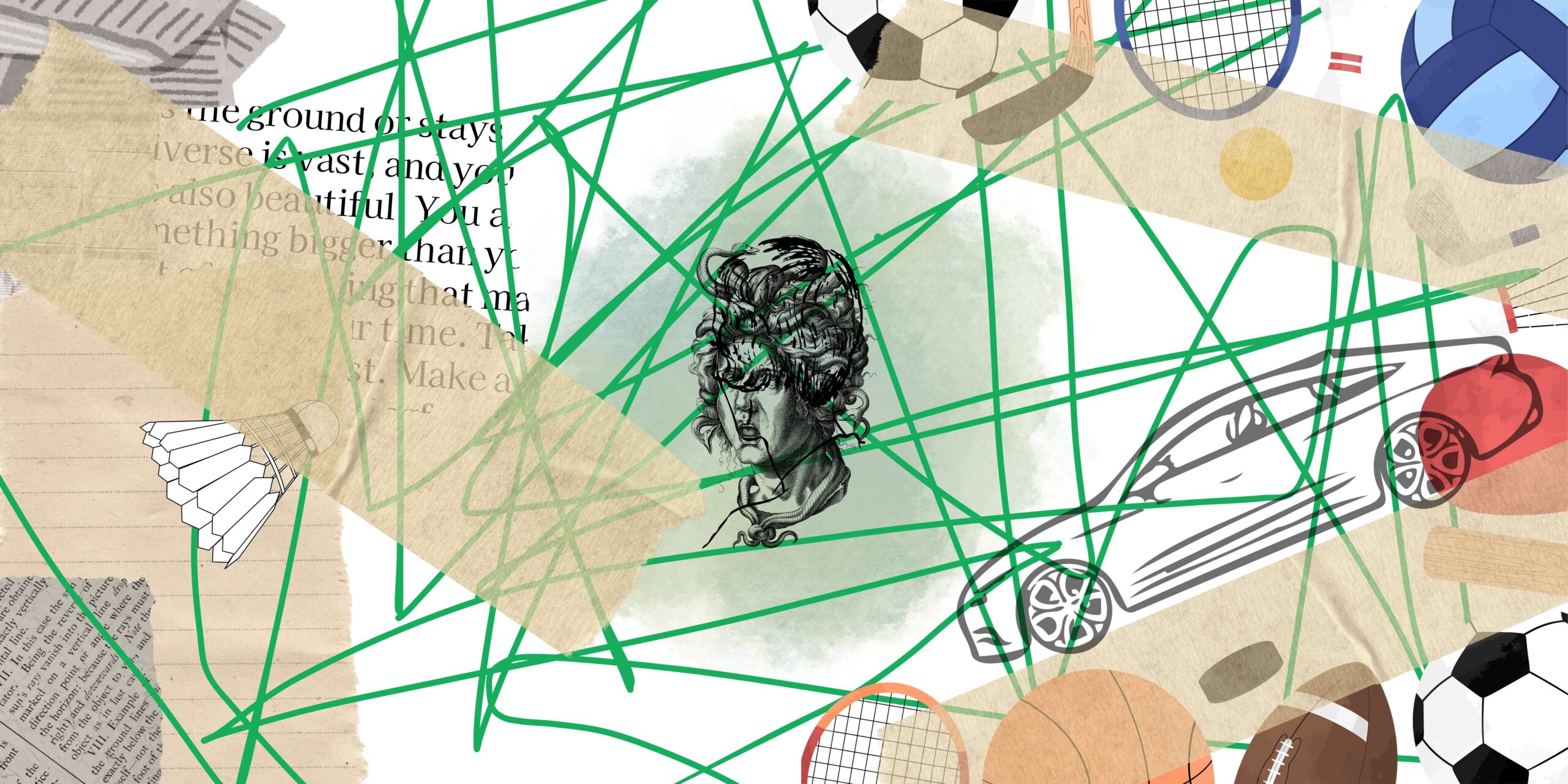Written by Najwa Bashir
ADHD is a brain condition characterized by problems with not paying attention, getting things done, or being too active and impulsive. People with inattention and disorganization can’t stay on task, don’t seem to listen and lose things they need for jobs at levels that aren’t appropriate for their age or level of development. Overactivity, pacing, not being able to stay sat, interrupting other people’s activities, and not being able to wait are all signs of hyperactivity-impulsivity that are too much for the person’s age or level of development. During youth, ADHD often happens at the same time as “externalizing disorders” like oppositional defiant disorder and conduct disorder of some people. ADHD often lasts into adulthood, which can make it hard to function in social, school, and work settings (American Psychiatric Association, 2022, p. 36).
Attention deficit/hyperactivity disorder (ADHD) is one of the most common mental and behavioral illnesses that kids and teens come to see for help. People with ADHD often have signs and problems that last a long time, even into adulthood. A lot of the time, ADHD is linked to other problems, like mood, worry, or drug abuse issues. Untreated ADHD has a lot of social and community costs over a person’s lifetime, such as poor academic and job performance, crime, car accident safety, and relationship problems (Wilens & Spencer, 2010). ADHD is one of the most common neurological diseases in the world. About 5–7% of children and teens (Polanczyk et al., 2007; Thomas et al., 2015) and about 2.5% of adults (Fayyad et al., 2017; Song et al., 2021) have it. A careful clinical review of symptoms and functional problems is needed to make a diagnosis of ADHD. Important standard factors help doctors make accurate diagnoses, such as the Diagnostic and Statistical Manual of Mental Disorders – 5th version (DSM 5) (Da Silva et al., 2023). According to DSM 5 TR, the following are the diagnostic criteria and features of attention-deficit/hyperactivity disorder.

Diagnostic Criteria for Attention-Deficit/Hyperactivity Disorder
A. A pattern of persistent lack of attention and/or hyperactivity-impulsivity that gets in the way of working or growth, as shown by (1) and/or (2):
- Not paying attention: at least six of the following symptoms have been present for at least six months in a way that is not consistent with the child’s developmental level and has a direct negative effect on social, academic, or work activities:
Note: The symptoms are not just a sign of oppositional behavior, resistance, anger, or not being able to understand what to do or how to do it. There must be at least five signs for older teens and adults (17 years and up).
a. Doesn’t pay close attention to details or makes careless mistakes in school, work, or other activities (for example, forgets or skips details, produces incorrect work).
b. Often has trouble staying focused on tasks or games (for example, has trouble staying on task during classes, talks, or long reading).
c. During direct communication, often doesn’t seem to listen (e.g., mind seems elsewhere, even when there aren’t any obvious distractions).
d. In general, doesn’t do what they’re told and doesn’t finish schoolwork, jobs, or work duties (for example, they might start a task but get distracted quickly).
e. Has a lot of trouble planning activities and tasks (for example, can’t keep things in order; work is often messy and disorganized; suffers from poor time management and misses deadlines).
f. Usually avoids, dislikes, or doesn’t want to do things that take long-term mental effort, like schoolwork or chores; for older teens and adults, this could include writing reports, filling out forms, or going over long papers.
g. Frequently drops things they need to do things (like school supplies, pencils, books, tools, wallets, keys, paperwork, eyeglasses, cell phones, etc.).
h. Is quickly distracted by outside stimuli, which for later teens and adults may include thoughts that aren’t connected.
i. Forgets to do things like do jobs and run errands, or for older teens and adults, remember to return calls, pay bills, and keep meetings. - Hyperactivity and impulsivity: At least six of the following symptoms have been present for at least six months in a way that is not consistent with the child’s age or level of development and has a bad effect on social, academic, or work activities:
Note: The symptoms are not just a sign of oppositional behavior, resistance, anger, or not being able to understand what to do or how to do it. There must be at least five signs for older teens and adults (17 years and up).
a. Moves their hands or feet around a lot or squirms in their seat.
b. Often gets up from their seat when they are supposed to stay put, like when they are in class, the office, or another place of work, or when they need to stay put in other situations.
c. Runs around or climbs up often when it’s not proper to do so. Note: In teens and adults, it may just mean feeling restless.
d. Not able to play or do other fun things alone very often.
“Is often on the go,” acting like they are “driven by a motor” (e.g., can’t or doesn’t like being still for long periods of time, like in restaurants or meetings; others may see them as restless or hard to keep up with).
f. Talks too much a lot of the time.
g. Often blurts out an answer before the question is finished (for example, finishing other people’s words; can’t wait their turn in a talk).
h. Often has trouble waiting for his or her turn (for example, in line).
Often stops or gets in the way of other people’s conversations, games, or activities (for example, butts into conversations, games, or activities; may start using other people’s things without asking or getting permission; for teens and adults, may get in the way of or take over what others are doing).
B. Several signs of not paying attention or being restless and reckless were present before the age of 12.
C. In two or more places (like at home, school, or job; with friends or family; doing other things), the person shows several signs of not paying attention or being hyperactive-impulsive.
D. There is strong proof that the symptoms impair or lower the quality of social, academic, or professional performance.
E. The symptoms aren’t just a part of schizophrenia or another psychotic disorder, and they can’t be explained by another mental disorder, like a mood disorder, an anxiety disorder, a dissociative disorder, a personality disorder, or heavy or light drug use.
Specify if:
F90.2 If both Criteria A1 (not paying attention) and A2 (being hyperactive or impulsive) have been met for the past 6 months, the person will be given a combined presentation.
F90.0 Presentation that is mostly not paying attention: If Criteria A1 (not paying attention) is met but Criteria A2 (hyperactivity or recklessness) has not been met in the last 6 months.
F90.1 If Criteria A2 (hyperactivity-impulsivity) is met and Criterion A1 (inattention) has not been met in the last 6 months, the person is likely to be hyperactive or impulsive.
Specify if:
In partial remission: Less than the full set of standards have been met for the past 6 months, but the symptoms still make it hard to function in social, school, or occupational settings.
Specify the current severity:
Mild: There are few or no symptoms that go beyond those needed to make the diagnosis, and the symptoms don’t make it hard to do things at work or in social situations.
Moderate: There are symptoms or problems with functioning that are between “mild” and “severe.”
Severe: There are a lot of symptoms, more than what is needed to make a diagnosis, or several very bad symptoms. The symptoms make it very hard to function in social or work settings.

Diagnostic Features for Attention-Deficit/Hyperactivity Disorder
- Attention-deficit/hyperactivity disorder (ADHD) is characterized by a pattern of chronic inattention and/or hyperactivity-impulsivity that gets in the way of working or growth. ADHD kids with inattention act out by getting sidetracked, not following through on directions, not finishing work or jobs, having trouble staying focused, and being disorganized. This isn’t because they are defiant or don’t understand.
- Hyperactivity is when a person does too much of something, like running around when it’s not proper, or when they fidget, tap, or talk too much. Adults with hyperactivity may be very antsy or wear other people out with all their activity. If someone acts impulsively, they do things quickly and without thinking, which could hurt themselves (for example, running into the street without looking).
- Impulsivity could mean that a person wants benefits right away or can’t wait to get them. People who act on impulse may be socially offensive (for example, talking over other people too much) or make big decisions without thinking about the long-term effects (for example, applying for a job without enough information).
- ADHD starts in childhood.
- The fact that several symptoms must be present before age 12 shows how important a significant clinical picture during childhood is. At the same time, a younger age at onset is not given because it is hard to say for sure when the symptoms started in youth.
- It is not always accurate for adults to remember symptoms from their youth, so it is helpful to get extra information. ADHD can’t be confirmed if there aren’t any signs before age 12.
- If signs of what seems to be ADHD show up for the first time after age 13, they are more likely to be caused by another mental problem or the brain effects of drugs.
- The problem must show up in more than one place, like at home, at school, and at work. It’s usually not possible to get a good picture of a person’s major symptoms in different settings without talking to people who have seen them in those situations.
- Most of the time, signs change based on the situation and place.
- Signs of the disorder might not be present if the person is rewarded often for good behavior, is closely watched, is in a new place, is doing very interesting things, is constantly stimulated from the outside (for example, by electronic screens), or is interacting with one person at a time (for example, in the clinician’s office).
The aforementioned criteria and features by DSM 5 TR can be kept into consideration to diagnose individuals with attention-deficit/hyperactivity disorder. Early diagnosis can ensure the treatment is started in the early phase of the individual’s life to help him deal with the issues and avoid farsighted adverse consequences.
References
- American Psychiatric Association. (2013). Diagnostic and statistical manual of mental disorders (5th ed.). https://doi.org/10.1176/appi.books.9780890425596
- American Psychiatric Association: Diagnostic and Statistical Manual of Mental Disorders, Fifth Edition, Text Revision (2022). Washington, DC, American Psychiatric Association.
- Da Silva, B. S., Grevet, E. H., Silva, L. C. F., Ramos, J. K. N., Rovaris, D. L., & Bau, C. H. D. (2023). An overview on neurobiology and therapeutics of attention-deficit/hyperactivity disorder. Discover Mental Health, 3(1), 2. https://doi.org/10.1007/s44192-022-00030-1
- Fayyad, J., Sampson, N. A., Hwang, I., Adamowski, T., Aguilar-Gaxiola, S., Al-Hamzawi, A., … & Kessler, R. C. (2017). The descriptive epidemiology of DSM-IV adult ADHD in the world health organization world mental health surveys. ADHD Attention Deficit and Hyperactivity Disorders, 9, 47-65. https://doi.org/10.1007/s12402-016-0208-3
- Polanczyk, G., De Lima, M. S., Horta, B. L., Biederman, J., & Rohde, L. A. (2007). The worldwide prevalence of ADHD: a systematic review and metaregression analysis. American journal of psychiatry, 164(6), 942-948. https://doi.org/10.1176/ajp.2007.164.6.942
- Song, P., Zha, M., Yang, Q., Zhang, Y., Li, X., & Rudan, I. (2021). The prevalence of adult attention-deficit hyperactivity disorder: A global systematic review and meta-analysis. Journal of global health, 11. https://doi.org/10.7189/jogh.11.04009
- Thomas, R., Sanders, S., Doust, J., Beller, E., & Glasziou, P. (2015). Prevalence of attention-deficit/hyperactivity disorder: a systematic review and meta-analysis. Pediatrics, 135(4), e994-e1001. https://doi.org/10.1542/peds.2014-3482
- Wilens, T. E., & Spencer, T. J. (2010). Understanding attention-deficit/hyperactivity disorder from childhood to adulthood. Postgraduate medicine, 122(5), 97-109. https:/doi.org/10.3810/pgm.2010.09.2206
I am a passionate and knowledgeable psychologist, with a Master of Philosophy (MPhil) in Psychology specializing in Counseling Psychology. Through my writing, I share my insights and thoughts on various psychiatric disorders, conduct analysis on films that touch on psychological issues, and explore other topics related to psychology, while also providing valuable information to psychology enthusiasts, students as well the general community.





